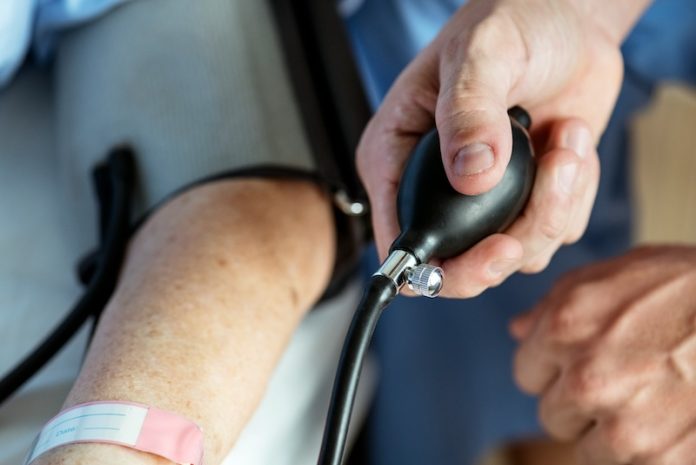
White coat hypertension is a condition where your blood pressure goes up when it’s measured at a doctor’s office or medical clinic but is normal when checked at home or in other non-medical settings.
This can be confusing and sometimes misleading, making it seem like you have high blood pressure when you actually don’t.
The term “white coat hypertension” comes from the white coats doctors traditionally wear. Many people feel nervous or anxious when they visit a doctor, and this anxiety can cause their blood pressure to rise temporarily.
Studies estimate that about 20-30% of people who have high readings at the doctor’s office actually have normal blood pressure elsewhere.
The reason for this rise in blood pressure has to do with the body’s natural response to stress. When you feel anxious, your body releases stress hormones like adrenaline. This is part of the “fight or flight” response, which is the body’s way of preparing for danger.
Adrenaline makes your heart beat faster and tightens your blood vessels, which causes your blood pressure to go up. This reaction is completely natural, but it can make your blood pressure appear higher than it really is.
While white coat hypertension is not as dangerous as having high blood pressure all the time, it’s still important to understand and manage it. One reason for this is that it could be a warning sign of something called masked hypertension.
This is when your blood pressure is normal at the doctor’s office but high during your daily life. Masked hypertension can increase the risk of heart problems if it is not treated.
To figure out if someone has white coat hypertension, doctors usually recommend measuring blood pressure at home for a while. Home blood pressure monitors are affordable and easy to use, and they can help provide a clearer picture of what your blood pressure is really like outside the doctor’s office.
Keeping a record of these readings and sharing them with your doctor can help determine if the high readings are only happening in medical settings.
Another way to check is through Ambulatory Blood Pressure Monitoring (ABPM). This involves wearing a small device that measures your blood pressure at regular times over 24 hours—even while you are sleeping.
This gives doctors a complete view of your blood pressure throughout the day and night. If your readings are only high at the doctor’s office and normal everywhere else, it is likely white coat hypertension.
If you are diagnosed with white coat hypertension, managing the anxiety that causes it can help. Techniques like deep breathing, meditation, and mindfulness exercises are great ways to calm your body and mind. Practicing these regularly can make them more effective when you are in stressful situations, like a medical appointment.
Another helpful option is Cognitive Behavioral Therapy (CBT), which is a type of talk therapy that teaches you how to change negative thought patterns and reactions to stress. Many people find that CBT helps them stay calmer during medical visits, which can lower their blood pressure naturally.
Lifestyle changes can also make a big difference. Regular exercise, eating a healthy diet, and getting enough sleep all help reduce anxiety and improve heart health. Cutting back on caffeine and alcohol can also help, as both of these can raise blood pressure and make anxiety worse.
In some cases, medication may be necessary if lifestyle changes are not enough. Doctors might prescribe blood pressure medicine or anti-anxiety medication to help keep blood pressure under control. However, this is usually only recommended if white coat hypertension is severe or if it leads to other health risks.
To sum up, white coat hypertension is when blood pressure goes up during a medical visit due to anxiety. It is important to know if this is happening because it could mask real high blood pressure that needs treatment.
The good news is that there are many ways to manage it, including home monitoring, relaxation techniques, therapy, lifestyle changes, and medication if needed. By understanding and managing white coat hypertension, you can get a clearer picture of your health and take steps to protect your heart.
If you care about blood pressure, please read studies about unhealthy habits that could increase high blood pressure risk, and eating eggs in a healthy diet may reduce risks of diabetes, high blood pressure.
For more information about blood pressure, please see recent studies that early time-restricted eating could help improve blood pressure, and results showing 12 foods that lower blood pressure.
Copyright © 2025 Knowridge Science Report. All rights reserved.



